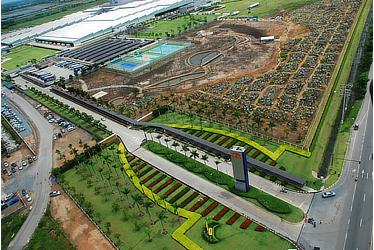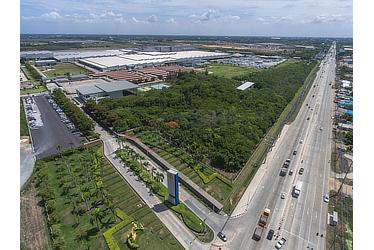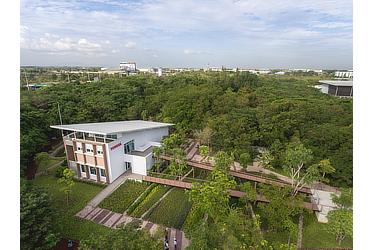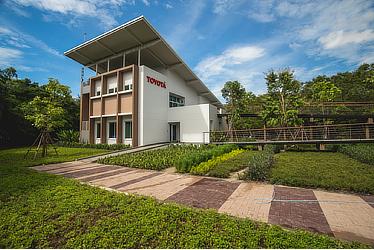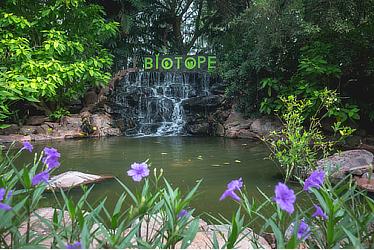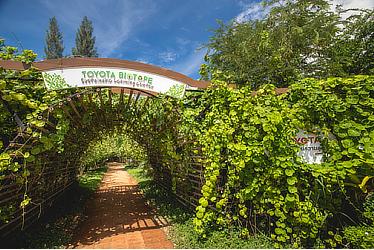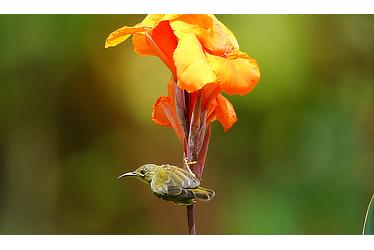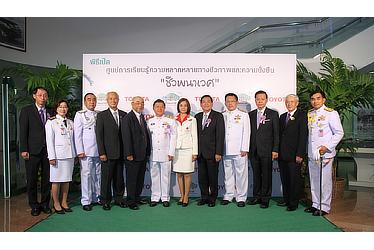Jun. 23, 2016
Toyota launches Biodiversity & Sustainability
Learning Center to complement its Biotope project in Thailand
<Bangkok, Thailand> 22 June 2016―Her Royal Highness Princess Maha Chakri Sirindhorn graciously presided over the launch of the Toyota Biodiversity and Sustainability Learning Center "Cheewa Panavet" at the Toyota Ban Pho Plant in Thailand. "Cheewa Panavet" is a combination of three Thai words, Cheewa (life), Pana (forest), and Vet (habitat). The learning center represents Toyota's commitment to the environment as it adds a greater learning element to the Toyota Biotope, a habitat of living organisms spanning over 96,000 square meters.
Her Royal Highness Princess Maha Chakri Sirindhorn received an audience consisting of Mr. Kyoichi Tanada, Managing Officer, Toyota Motor Corporation and President, Toyota Motor Thailand. The event was also attended by senior government representatives from Thailand as well as Toyota's top executives, dealers, suppliers, the private sector, the Chachoengsao local communities and the media.
In over 50 years of Toyota's operations in Thailand, the company has been committed to contributing to Thailand by being a good corporate citizen, and by contributing to the sustainable development and human resources of Thailand. The environment is a part of Toyota's commitment, including the conservation and preservation of the environment through Toyota's initiatives such as the "Toyota Green Town" project to create sustainable integrated environmental efforts that cover all areas of the country.
Toyota believes that the automotive industry can be environmentally sustainable, and hence Toyota launched the Eco Forest, an afforestation project, at the Toyota Ban Pho Plant in 2008. The following year, Toyota embarked on the Toyota Biotope Project which is the first of its kind in Thailand―to create a habitat of living organisms, born out of manmade efforts, around the plant. This was done with the objective of environmental conservation and knowledge dissemination. In 2016, the project has been brought to a new level as Toyota sought to include a greater learning element. This gave birth to the Toyota Biodiversity and Sustainability Learning Center "Cheewa Panavet."
The Toyota Biodiversity and Sustainability Learning Center "Cheewa Panavet" was born from the determination of Toyota to raise the level of awareness of the Thai people of the value of the environmental and biodiversity through learning and experiencing a "classroom in nature". Toyota is cooperating with the Foundation for Environmental Education for Sustainable Development (Thailand) and Office of the Basic Education Commission (OBEC), Ministry of Education, to provide environmental education. This is done in the form of helping to develop a curriculum for students, and by 2016 to run a trial on environmental lessons from "Cheewa Panavet" to secondary schools in Chachoengsao Province before doing an assessment for further improvements on our efforts.
The Toyota Biodiversity and Sustainability Learning Center "Cheewa Panavet" consists of three main sections, namely:
-
- Eco Forest
- The Eco Forest project within Toyota Ban Pho plant began in 2008 and serves as an integral part for Ban Pho to be selected as one of the five "Sustainable Plants" from among Toyota's global network. Over 48,000 square meters of forested area within Toyota Ban Pho employ the sustainable forest method of Prof. Dr. Akira Miyawaki, Professor Emeritus at Yokohama National University and Director of the Japanese Center for International Studies in Ecology of Japan. The hallmark of this method is that it shortens the growth of forests by up to ten times, and allows for a rate of tree survival of over 90%. Currently, there are 43 species of plants within the Eco Forest.
-
- Toyota Biotope
- The Biotope is the habitat of living organisms which has become a home to plants, animals and other living organisms which form the ecosystem. The biotope at Toyota Ban Pho is the first of its kind in Thailand which was constructed under the concept of "from sky to mountain to river" through an imitation of different forest communities such as biotopes of evergreen forests, mixed deciduous forests, dry dipterocarp forests, wetlands ecosystems such as brackish water ecosystems, and mangrove forests. Currently, there are over 218 species of living organisms dwelling in an area of over 48,000 square meters.
-
- Royal Commemoration Exhibition Building
-
The interior of the building consists of the Royal Commemoration Exhibition Room that exhibits projects under royal initiation on the environment and an exhibition room on ecosystems on the ground and below the ground using the example of a Bodhi tree, a local species and a symbol of Ban Pho.Toyota truly hopes for Cheewa Panavet to be a "green town" where the community including children and youth will be able to learn and appreciate the environment, biodiversity and the importance of environmental preservation.




